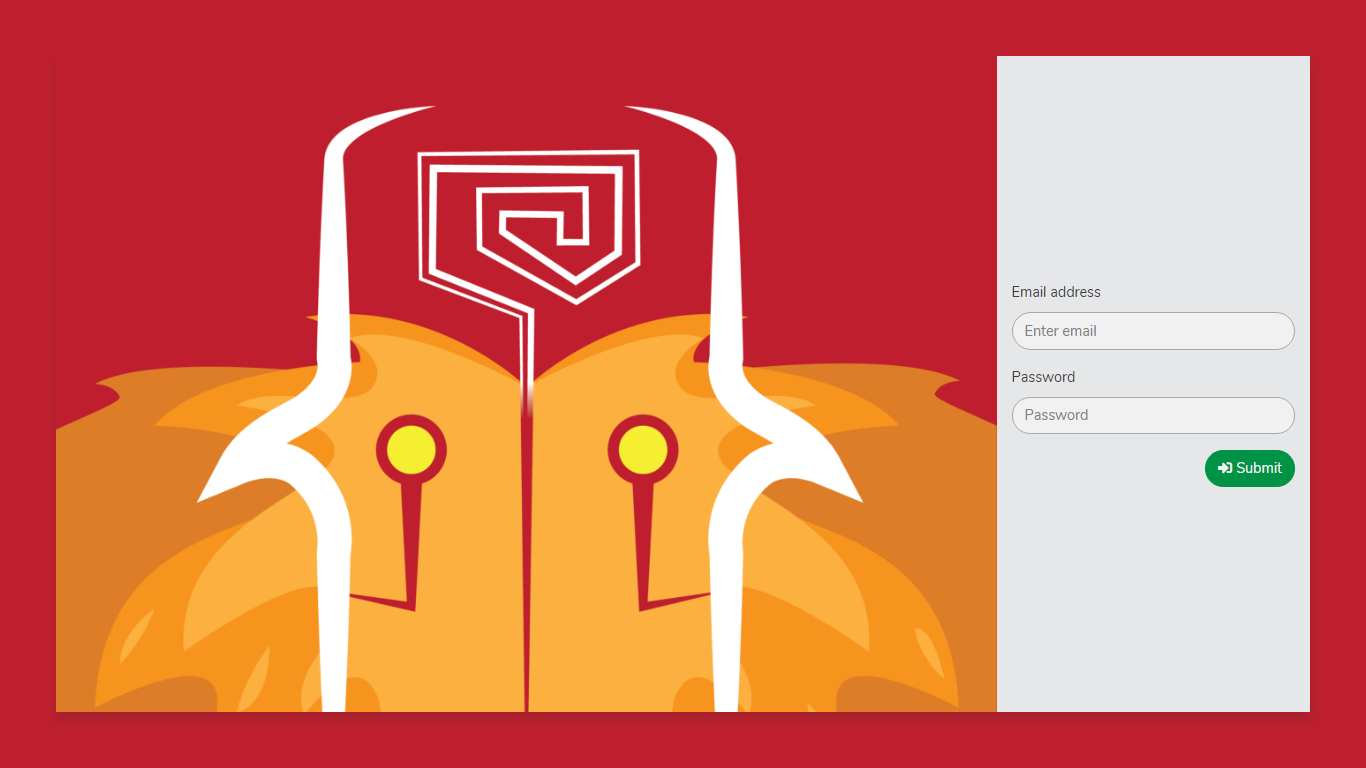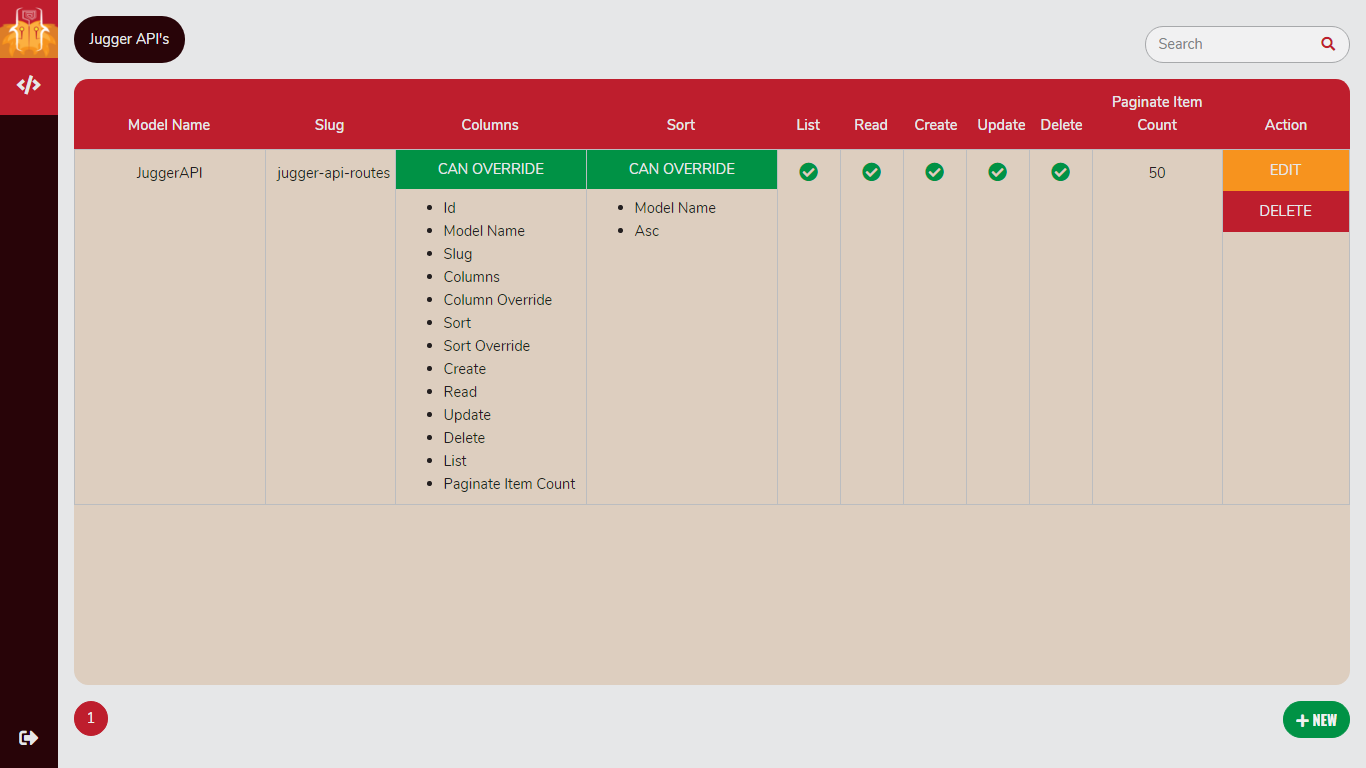jianastrero / jugger-api
Jugger API makes creating API's the easiest way possible on laravel..
This package's canonical repository appears to be gone and the package has been frozen as a result. Email us for help if needed.
Installs: 113
Dependents: 0
Suggesters: 0
Security: 0
Stars: 1
Watchers: 1
Forks: 1
Open Issues: 2
pkg:composer/jianastrero/jugger-api
Requires
- doctrine/dbal: ^2.8
README
Create API using CRUD | Code-Free API creation
screenshots
Description
Jugger API makes creating API's the easiest way possible on laravel. It runs together with your app and can be found at http://yourdomain.com/jugger-api. It depends on Passport, dbal and VueJS. Laravel Passport for OAuth on API's, and VueJS for the web to create your API's. dbal is used for transformation / mutation. Jugger API follows best practices for API development.
Dependencies
- laravel/passport (depends on laravel version, should be required manually)
- doctrine/dbal (automatically required)
Features
- Admin Panel for API Routes
- Integrated with Laravel Passport
- CRUD style API creation
- Handle's operations and errors using HTTP status codes
- API Versioning
- Jugger Admin Account for JuggerAPI only
- Auto-disable web interface on production
- API with file upload
- Flexible
| Default | Override through request | Method | slug | |
|---|---|---|---|---|
| select columns | OK | OK | GET | /api/v1/jugger-api-routes?cols=id,model_name |
| sort by column | OK | OK | GET | /api/v1/jugger-api-routes?sort=+id or /api/v1/jugger-api-routes?sort=-id |
| search or filter | OK | OK | GET | /api/v1/jugger-api-routes?q=slug:user or /jugger-api-routes?q=users or /jugger-api-routes?q=slug:user,users |
| specify items per page | OK | OK | GET | /api/v1/jugger-api-routes?items=24 |
| resource slug | GET | POST | PUT | DELETE |
|---|---|---|---|---|
| /api/v1/jugger-api-routes | Returns a list | Creates an item | Updates multiple items | Delete multiple items |
| /api/v1/jugger-api-route/1 | Returns an item | 404 | Updates an item | Delete an item |
Features planned
- API Overview
- Code - Free Mutations Transformation
Installation
1.A Require the package
composer require jianastrero/jugger-api
1.B Require laravel passport
Laravel 5.6 up
composer require laravel/passport
Laravel 5.5
composer require laravel/passport=~4.0
Laravel 5.4
composer require laravel/passport=~2.0
2. Depending on your laravel version, you may need to add this to config/app.php
'providers' => [ ... JianAstrero\JuggerAPI\JuggerAPIServiceProvider::class ... ]
3. Publish Jugger API resources
php artisan vendor:publish --tag=jugger-api
4. Setup config with db credentials
DB_HOST=localhost DB_DATABASE=homestead DB_USERNAME=homestead DB_PASSWORD=secret
5. Migrate your app, passport and jugger's tables (This is both for JuggerAPI and passport)
php artisan migrate
6. Seed Jugger API with its own
php artisan jugger:seed
7. Create your jugger api admin account (default username: juggeradmin, default password: AdminPassword)
php artisan jugger:admin or php artisan jugger:admin myadminuser myadminpassword
Passport (for OAuth) read more on: Laravel Passport
8. Install passport
php artisan passport:install
9. use trait HasApiToken on User model
use Notifiable, HasApiTokens;
10. Add Passport::routes on AuthServiceProvider
public function boot() { $this->registerPolicies(); Passport::routes(); }
11. Set the driver for api and add Jugger API admin's guards to passport and add provider for jugger admins on config/auth.php
'guards' => [ 'web' => [ 'driver' => 'session', 'provider' => 'users', ], 'api' => [ 'driver' => 'passport', 'provider' => 'users', ], 'juggeradmin-api' => [ 'driver' => 'passport', 'provider' => 'juggeradmins', ], 'juggeradmin' => [ 'driver' => 'session', 'provider' => 'juggeradmins', ], ... 'providers' => [ 'users' => [ 'driver' => 'eloquent', 'model' => App\User::class, ], 'juggeradmins' => [ 'driver' => 'eloquent', 'model' => JianAstrero\JuggerAPI\Models\JuggerAdmin::class, ] ], ],
VueJS
12. Install npm packages
npm install
13. Install npm vue session
npm install vue-session
14. Let web pack recognize sources (webpack.mix.js)
mix .js('resources/jianastrero/jugger-api/js/jugger-api.js', 'public/js') .sass('resources/jianastrero/jugger-api/sass/jugger-api.scss', 'public/css');
15. Compile sources
npm run dev
How to use
Run your web app(php artisan serve) then open your favorite web browser and navigate to http://127.0.0.1:8000/jugger-api From here, you could use any user you already have to login. If you dont have a user, better create one. On Future changes JuggerAPI will have its own login account such that it wont interfere with your app. Remember that as of now, it is required to use email and password to get authenticated and be logged in.
Once logged in, you could then create new routes, edit, or delete. Also, be careful to delete the record for JuggerAPI because it will refrain you from creating, modifying, or deleting new records. To fix this, run php artisan jugger:seed again.
To make a model be recognized by JuggerAPI, your model should use the traits HasTable and CanMutate
use Notifiable, HasApiTokens, HasTable, CanMutate;
When this is done, just refresh your page and this model will be available on add and edit modal selection.
To allow add and edit on a model, you need to define fillables
protected $fillable = [ 'name', 'email', 'password', ];
For automatic mutation, Jugger API utilizes the casts array of models to transform arrays. For files, use juggerCasts array. This will soon be changed on a newer version for automatic mutation.
protected $casts = [ 'array_column' => 'array' ]; protected $juggerCasts = [ 'myfile' => 'file' ];
NOTE: JUGGER API IS AUTOMATICALLY DISABLED ON PRODUCTION MODE(DEBUG OFF / FALSE). THIS IS TO PREVENT API'S FROM BEING ALTERED ON PRODUCTION
License
This software is released under the MIT license.


